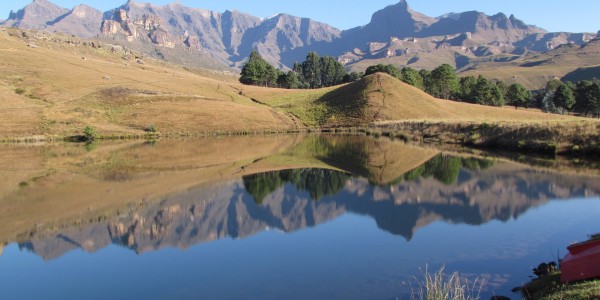Many foreign visitors to South Africa can name only two events in South Africa’s history: the Anglo-Boer war and the Zulu wars. The century-long struggle for land in the Frontier Country in the Eastern Cape has always been overlooked, despite its instrumental role in shaping the rest of South Africa’s heritage.
Boer, Xhosa & Zulu Battlefields
Why visit Boer, Xhosa & Zulu Battlefields ?
Eastern Cape
The Xhosa, the Khoi-Khoi, immigrant farmers and British settlers were all inextricably bound together, and torn apart, in the battles that took place for over a hundred years during the Frontier wars. Most South African citizens can claim that their ancestors spilled blood on the plains of the Eastern Cape in a series of conflicts that were never fully resolved.
The peoples involved in the history of the old Zuurveld region of the Eastern Cape were as diverse as its ecology. “Nowhere else offers such an amazing confluence of human venture and its many frontiers, across time, upon the oceans and between continents,” wrote Noël Mostert in ‘Frontiers’. This is emphasised in the tours through the Valley of Ancient Voices where you can view original San rock art and stand on ancient battlefields.
The most expensive of these conflicts, for the British settlers at least, was the Battle of Grahamstown in 1819. Follow the path of this battle from Makana’s Kop in Grahamstown/Rhini. It is on the blustery crest of this hill that the legendary prophet Makana stood, moments before giving 10 000 Xhosa warriors orders to storm the British settlement. While the battle itself was relatively short it did not end with the bloodbath and Makana’s surrender. The story continues with Makana’s imprisonment on Robben Island – one of its first political prisoners – & the Xhosa people’s devoted vigil for his return.
Kwazulu Natal
As well as the stunning scenery, the history in each and every town is tangible with many places being the scene of one of the mighty battles of the 19th Century. Blood River, Colenso, Isandlwana and Rorke’s Drift, are just a few of the battles that were fought between Zulu and Boer, Boer and British and the British and Zulu.
In 1879 the British invaded Zululand. The central of the three major invading columns forded the Buffalo River at Rorke’s Drift. Within days Lord Chelmsford’s invasion was in jeopardy. On the 22nd January part of his central column had been almost annihilated at Isandlwana in a battle rated as one of the greatest military disasters in British colonial history. A few survivors struggled back into Natal across the mighty Buffalo River. Lieutenants Melvill and Coghill died in a gallant attempt to save the Queen’s colours, earning the first posthumous Victoria Crosses in history.
A great wing of the Zulu army then went on to attack the British garrison at Rorke’s Drift, which was originally the site of a Swedish mission, and its three small buildings were commandeered by the British Army at the start of the Zulu War. Only 110 men were stationed there when two survivors from Isandlwana arrived warning about an imminent Zulu attack. A few hours later more than 4000 Zulu warriors launched an assault on the mission station and the defence of Rorke’s Drift is one of the epic tales of British military history. No fewer than 11 Victoria Crosses were awarded to the soldiers who resisted for 12 hours before help arrived.
LOCATION
SOUTH AFRICA INFO
Visa
No Visa is required for UK passport holders.
Health Requirements
No mandatory vaccinations are required.
Time Difference
GMT + 2 Hours
Flight Time
11.5 Hours Direct
NEWSLETTER SIGNUP
Keep up-to-date with the latest travel trends, inspiration for future trips and competitions to win luxury travel vouchers.
Subscribe



















